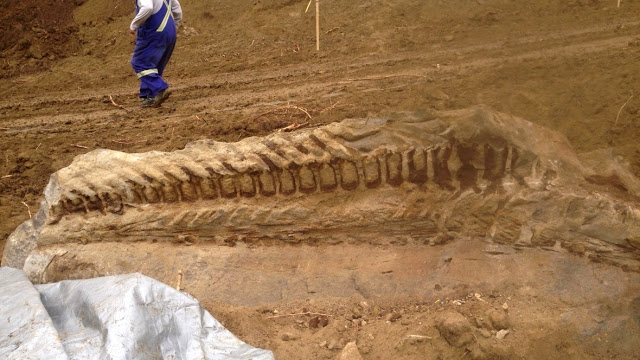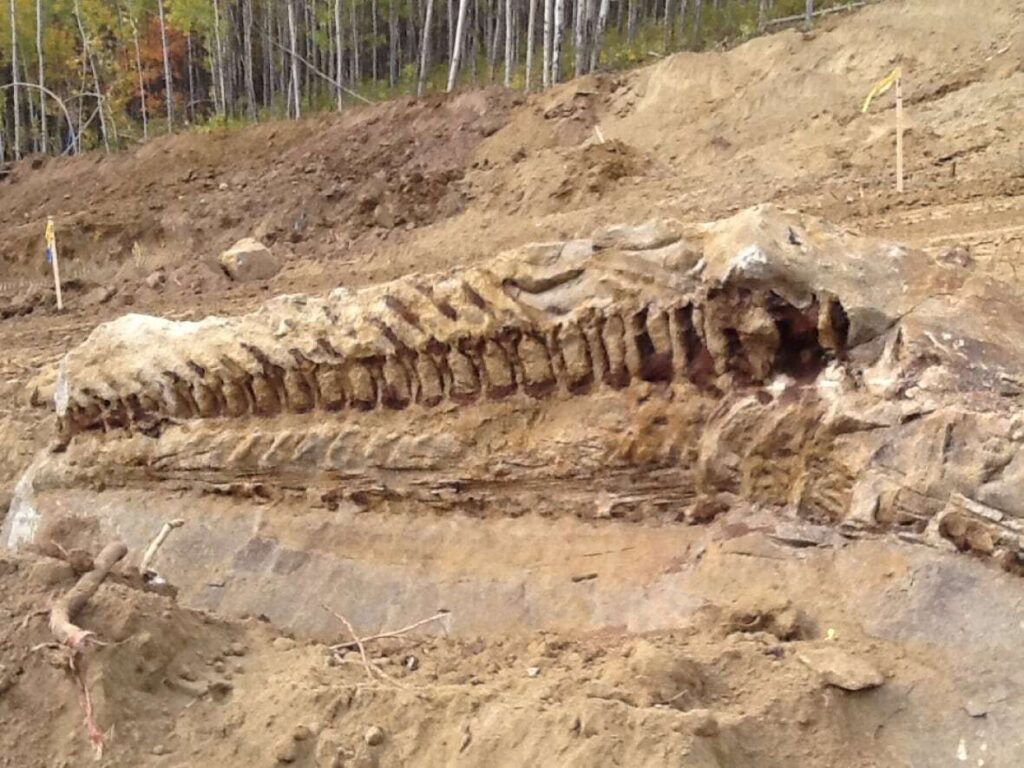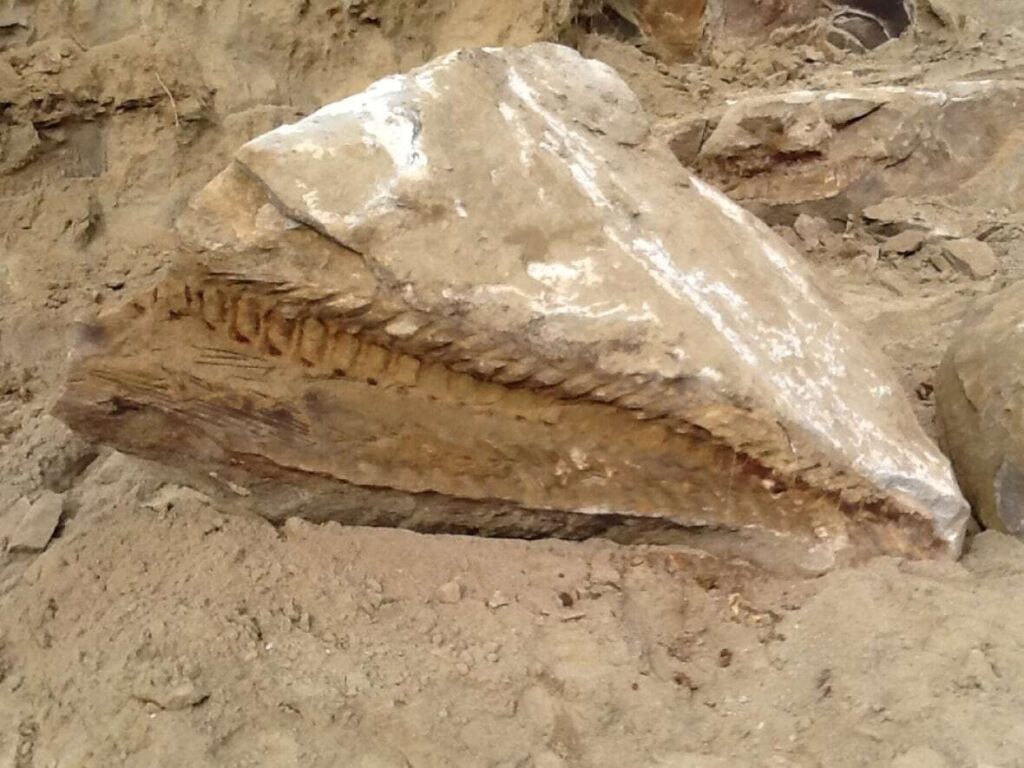Massive dinosaur fossil unearthed by Alberta pipeline crew

Massive dinosaur fossil unearthed by Alberta pipeline crew
Some people like to go on and on about how no good can come out of constructing oil pipelines, but this is not entirely true, as it turns out. This past Tuesday, in Alberta, Canada, workers working on an oil pipeline came across the fossilised bones of a dinosaur.
In the Saddle Hills area southwest of Spirit River, information shared with the public says the fossils were located at a depth of about 1.5 metres (about 5 feet).

Apparently, The workers who discovered them, accidentally chipped off the tip of the tail of the dinosaur before recognizing what they were dealing with.
However, once they understood what they had just found, they stopped all activity and told local authorities and experts about their finding.
Paleontologists and some other researchers were already present at the site by Wednesday, reports CBC. All it took was a quick look at the huge fossil of dinosaurs, and they proudly declared that this find was one of the most remarkable discoveries made in a very long time.

Thus, preliminary investigations have revealed that, contrary to expectations, this massive dinosaur fossil is pretty much intact, the same source tells us.
This means that, unlike many other dinosaur skeletons that have been unearthed in various parts of the world over the years, the one found in Alberta is not broken down into a myriad of bits and pieces.
Preliminary investigations have revealed that the dinosaur unearthed in Alberta measured about 30 meters (100 feet) from head to tail.
According to The Edmonton Journal, the dinosaur is believed to be a hadrosaur, i.e. a herbivorous species that thrived in present-day Europe, Asia and North America during the Upper Cretaceous Period.

The fossilized remains are to be carefully dug out over the following weeks. Once they pull them out of the ground, researchers will get the chance to have a closer look at them.
Hopefully, specialists will be able to determine how old they are, and maybe even explain how and why this dinosaur died.